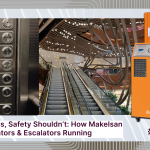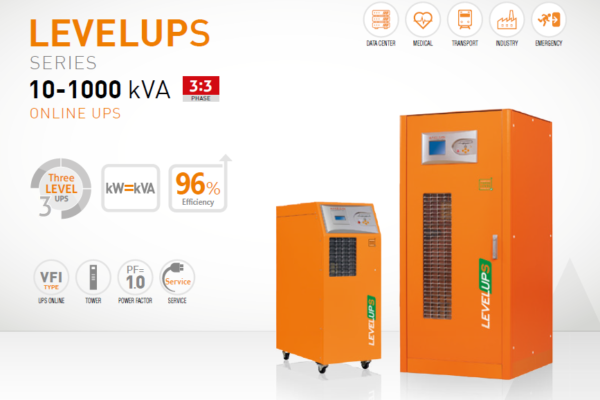In today’s connected world, continuous power isn’t just a luxury—it’s a necessity. Whether you’re safeguarding critical equipment in a hospital, keeping a data center running smoothly, or simply ensuring your home electronics aren’t abruptly shut down during an outage, reliable backup power is key. This is where UPS (Uninterruptible Power Supply) systems and inverters come into play. Although both devices rely on batteries to provide backup power, they are designed differently to meet varying needs. Let’s explore these differences in detail.
What is a UPS?
A UPS (Uninterruptible Power Supply) is engineered to provide immediate, seamless backup power. When mains power fails, a UPS instantly switches over—often within 3 to 8 milliseconds—so that connected devices (like computers, servers, or medical equipment) experience no interruption. This rapid response is critical for systems that cannot afford even a momentary loss of power.
Key Features of a UPS:
- Seamless Transition: Offers near-instantaneous switching to battery power.
- Power Conditioning: Provides protection against surges, voltage fluctuations, under-voltage, over-voltage, and electrical noise.
- Double Conversion: Typically converts AC to DC (for charging) and then back to AC, ensuring a stable and clean output.
- Integrated Design: Includes not only an inverter but also a built-in battery charger and additional circuitry for monitoring and control.
What is an Inverter?
An inverter is a device that converts direct current (DC) stored in a battery into alternating current (AC) that most household and office devices require. Inverters are commonly used where a short delay in power delivery is acceptable, such as for general lighting or less sensitive appliances. Unlike a UPS, inverters might not provide instantaneous switching; typical transfer times range from 25 to 500 milliseconds.
Key Features of an Inverter:
- Power Conversion: Converts DC from a battery to AC power.
- Simpler Circuitry: Often lacks the integrated battery charger or additional surge-protection circuitry found in UPS systems.
- Versatility: Ideal for residential and light commercial applications where a slight delay in power restoration won’t disrupt operations.
Detailed Comparison: UPS vs. Inverter
Response Time
- UPS: Transfers to battery power in 3 to 8 milliseconds, ensuring zero interruption for sensitive devices.
- Inverter: Typically takes between 25 and 500 milliseconds to switch over, which may be acceptable for non-critical loads.
Technical Operation
- UPS: Uses a double-conversion process. Incoming AC is rectified to DC (charging the battery) and then inverted back to AC to supply connected devices. This guarantees clean, regulated power during outages.
- Inverter: Converts DC from the battery directly into AC. While many inverters monitor mains power to trigger the switch, their transition isn’t as seamless as that of a UPS.
Circuit Architecture
- UPS: Generally consists of three main components:
- Rectifier/Charger: Converts AC to DC and charges the battery.
- Inverter: Converts DC back to AC.
- Controller: Manages the switching and ensures a stable output.
- Inverter: Typically includes the inverter circuitry and basic controls, making it simpler and less expensive.
Connection & Integration
- UPS: Designed to be directly connected to critical devices, ensuring continuous power even during brief outages.
- Inverter: Usually integrated into the broader power supply system of a home or office, powering non-critical circuits like lighting.
Usage
- UPS: Suitable for homes, offices, commercial environments, and industrial settings. Its ability to provide clean, uninterrupted power makes it ideal for sensitive electronics and mission-critical systems.
- Inverter: Best suited for residential or small-scale commercial use where backup power needs are less demanding. It is commonly used for general lighting and low-power appliances.
Voltage Regulation
- UPS: Often features Automatic Voltage Regulation (AVR) that maintains a consistent output (typically around 220-230 volts), even when the input voltage fluctuates.
- Inverter: Outputs standard AC voltage but may not offer the same degree of fine regulation as a UPS.
Price
- UPS: Generally more expensive due to the sophisticated design and additional protective features.
- Inverter: Usually more cost-effective, reflecting its simpler circuitry and design focus on power conversion rather than protection.
Which One Do You Need?
Deciding between a UPS and an inverter depends on your specific needs:
- Choose a UPS if you need immediate, unbroken power for sensitive electronics such as computers, servers, or medical equipment. Its fast response time and power conditioning make it indispensable in high-stakes environments.
- Choose an Inverter if your primary goal is to convert stored DC power to AC for less critical applications, such as lighting or basic home appliances, where a slight delay in power delivery is acceptable.
The Actolog Advantage
Whether you require extended backup power for your home or business, or you need to protect sensitive equipment from power fluctuations, Actolog Solutions Limited is here to offer you a range of tailored solutions. Our offerings include state-of-the-art Makelsan UPS systems designed to deliver both reliability and performance.
For more information about our products and services, visit actolog.com or contact us at actologng@gmail.com or call 09062830781.
In today’s unpredictable power landscape, choosing the right backup power solution can make all the difference. Trust Actolog Solutions Limited to provide the power security your business and home deserve.
